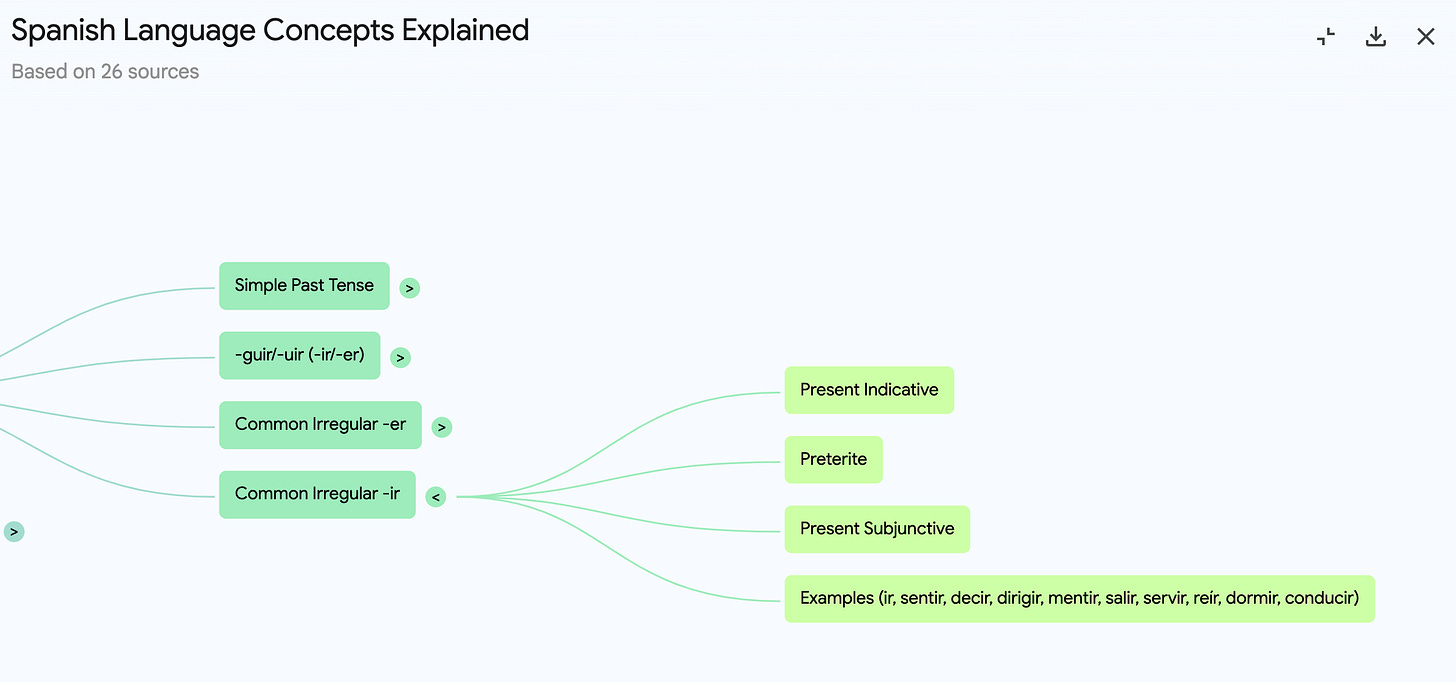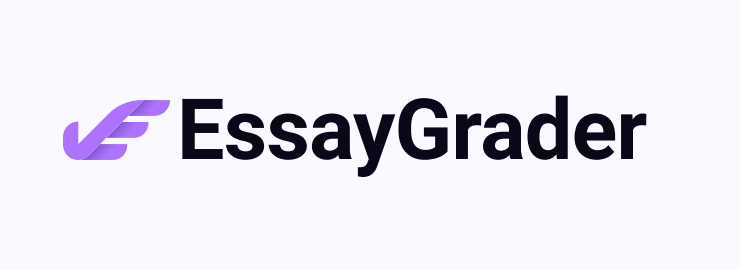NotebookLM’s Latest Update: Interactive Mind Maps
In the last week, Google has introduced significant upgrades to NotebookLM, enhancing its functionality and usability for teachers and students. Foremost among them is the Mind Map feature that diagrams key concepts to help conceptual understanding.
With these and previous updates, NotebookLM has rapidly morphed into a comprehensive platform for streamlining knowledge organization. Mind Map, in particular, improves NotebookLM’s ability to synthesize complex information and offer dynamic learning possibilities.
Interactive Mind Map for Understanding Concepts
The most exciting new NotebookLM feature is Mind Map, a visual tool that organizes key concepts and ideas into structured diagrams. NotebookLM users can see relationships between different topics and sources, making it easier to recognize patterns and connections.
How It Works: NotebookLM automatically generates a branching diagram that represents key themes extracted from uploaded documents, YouTube videos, and other sources.
Customization: Users can expand, collapse, and rearrange nodes to tailor the visual representation according to their learning needs.
Use Cases: This feature is particularly useful for students and educators who need to analyze complex subjects such as research papers, historical events, or language acquisition.
A Visual Overview
To illustrate Mind Map, I’ll use my intermediate Spanish student Notebook. I use this Notebook to improve my Spanish proficiency.
First, I select my “Spanish Student - B1-B2 level” NotebookLM Notebook.
I then proceed to the Notebook Chat panel, where I see the Mind Map button just to the right of the Audio Overview:
I click the Mind Map button and I’m taken to the Notebook Studio panel. I scroll down and below Notes I see:
I click it and wait several seconds. Once the mindmap is ready, the generic “New Mind Map” changes to incorporate the topic of the notebook:
I indeed click it to open the Mind Map. This is what I see:
I use the + - icons on the right to zoom in and out as needed, and (for good measure) I select the “Good content” button on the left to give Google feedback on its creation.
Notice the arrows to the right of the concepts. To go deeper into a concept, I select a corresponding arrow. In this case, I choose the arrow to the right of Verbs:
After I click the Verbs arrow, I then click the Irregular verbs arrow.
Note: To retrace my steps, I can click on the arrow beside either Verbs or Irregular verbs, which (if you look closely) are now facing in the opposite direction.
I zoom out to see all concepts clearly. I also click and hold the image and move it around to center all the concept elements on the image.
Note that the diagram can branch into several directions simultaneously, as desired. In this case, I click on the arrows to the right of Verbs and Pronouns:
In this case, I select the arrow to the right of “Common Irregular - ir”:
You’ll notice that there are no arrows to the right of the new concepts. But if I click on one of these concepts, I’ll be taken to their corresponding NotebookLM sources.
I’ll click on Present Subjective:
Note that I’m taken to Chat mode where NotebookLM automatically provides and answers a prompt: “Discuss what these sources say about Present Subjunctive, in the larger context of Common Irregular -ir.” NotebookLM also provides suggested prompts to delve further into this concept.
I can now focus on this particular concept in Spanish grammar. I can ask NotebookLM to create examples, quizzes, and more to help hone my understanding of the present subjunctive.
In partnership with Essay Grader
Essay Grader is a straightforward, powerful tool that uses AI to take the load off your shoulders and will completely change the way you approach grading!
Every feature puts teachers first, with a focus on simplifying repetitive tasks like grading to improve productivity - all the while letting teachers be fully in control.
Streamline grading, provide detailed, actionable feedback to your students, and maintain complete control over your assessments - all in one intuitive interface.
Reduce grading time by 80%. Grade your entire class's essays in 2 minutes or less and deliver high-quality, specific feedback to your students.
Ensure fair essay grading by removing bias and aligning with state standards like Texas STAAR, Florida BEST and California CCSS.
Join Essay Grader and its ever-expanding network of 60,000+ educators, and you’ll connect with others who share your passion and commitment.
Mind Map Takeaways
After exploring Mind Map, I think there are several key takeaways:
Personalized Learning: As I demonstrated above, students can create personalized mind maps that target their learning needs and it can encourage autonomy. I created a spanish Notebook to address my specific learning needs and Mind Map helps focus and hone my understanding of specific concepts.
Improved Organization: Mind Map displays the hierarchical structure of topics, and in this manner can assist students in organizing their ideas and recognizing the relationships between concepts.
Interactive, Engaged Learning: The interactive nature of Mind Map encourages users to click and engage, prompting both students and teachers to explore topics dynamically.
Teacher Creativity: If I were to leverage my Spanish Notebook as an educator, I would use mind maps to design lesson plans, create guides and activities, and collaborate with colleagues.
How about you? Any comments, or suggestions? Please provide them below.
AI in Edu: News, Tools & Views is sent to all subscribers on Fridays.
Find more AI tools, views, and how-to’s at tomdaccord.com
Find my book AI Tools & Uses: A Practical Guide for Teachers at Amazon
*Learn more about Essay Grader












Underrated tool.